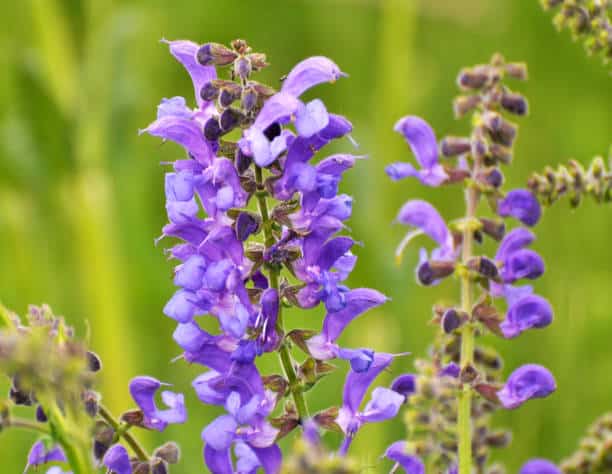Wake-robin, also known as Trillium, is a group of perennial plants that grace woodlands with their enchanting presence. With their unique characteristics and diverse species, Wake-Robins has become a fascination for nature enthusiasts and gardeners alike.
In this comprehensive guide, we will delve into the world of Wake-Robin plants, exploring their features, cultivation tips, and the magical allure they bring to natural landscapes.
Understanding Wake-Robin Plants:
Identification: Wake-robin plants are characterized by their distinctive three-petaled flowers and whorl of three leaves. These woodland treasures belong to the Trillium genus, with various species boasting different colors and sizes. From the white Trillium grandiflorum to the red Trillium erectum, each variety adds its unique charm to the natural tapestry.
Habitat and Range: Wake robins are native to North America and can be found in rich, moist woodlands. They thrive in the dappled sunlight filtering through the forest canopy, creating picturesque displays on the forest floor. Understanding their natural habitat is crucial for successfully cultivating Wake-Robin in your garden.
Cultivating Wake-Robin Plants:
- Soil and Light Requirements: Wake-robin plants prefer well-drained, humus-rich soil. Mimicking their natural woodland habitat, plant them in areas with dappled shade. Partial shade to full shade conditions is ideal for their growth.
- Planting and Care: When planting Wake-Robins, ensure the rhizomes are planted just below the soil surface. Adequate moisture is essential during the growing season. Mulching around the plants helps maintain soil moisture and suppress weeds. As they are slow growers, patience is key when waiting for these woodland gems to flourish.
- Propagation: Wake-robin plants can be propagated through division or seeds. The division is typically done in late summer or early fall, ensuring that each divided section has both roots and shoots. Growing from seeds requires patience, as germination can take up to two years.
- Uses for wake-robin: In forests, the wake-robin can become so numerous that the forest floor seems covered with snow during the plant’s blooming season. It can also be grown in beds and borders. Although it would seem to be an attractive cut flower, harvesting it means cutting its leaves as well. This deprives the root of its nourishment, leading to the plant’s demise.
Lewisia: All you need to know about the Garden Flower
How To Take Care Of Wake-Robin Plants
Taking care of Wake-Robin plants, also known as Trilliums, involves creating conditions that mimic their natural woodland habitat. Here’s a guide on how to care for these enchanting plants:
Choose the Right Location
Wake robins thrive in shaded woodland areas with well-drained, humus-rich soil. Select a site with dappled sunlight, mimicking their native habitat. Avoid planting them in full sun, as they prefer the filtered light found beneath forest canopies.
Planting
- Planting Time: The best time to plant Wake-Robin rhizomes is in late summer or early fall.
- Depth: Plant rhizomes just below the soil surface, ensuring that the top of the rhizome is covered with a thin layer of soil.
- Spacing: Provide enough space between plants for proper air circulation and growth.
Soil Conditions
- Rich, Moist Soil: Wake-Robins prefer well-drained, moist soil with a high organic content. Add organic matter such as compost to enhance soil fertility.
- Mulching: Apply a layer of organic mulch, such as leaf litter or bark chips, around the plants to retain soil moisture and suppress weeds.
Watering
- Consistent Moisture: Keep the soil consistently moist, especially during the growing season. However, ensure that the soil is well-drained to prevent waterlogging.
- Avoid Overwatering: While they require consistent moisture, Wake-Robins are susceptible to root rot if the soil is excessively wet.
Fertilization
- Minimal Fertilization: Wake robins do not require heavy fertilization. A layer of organic mulch will gradually release nutrients into the soil. Avoid excessive use of synthetic fertilizers, as they can harm these slow-growing plants.
Division
- Timing: Divide Wake-Robin plants in late summer or early fall, every few years, to rejuvenate and propagate them.
- Careful Handling: When dividing, ensure that each section has both roots and shoots. Be gentle to avoid damaging the delicate rhizomes.
Pest and Disease Management
- Watch for Pests: Keep an eye out for pests like slugs and snails, which can damage the leaves. Use organic methods or natural predators to control pest populations.
- Prevent Diseases: Ensure good air circulation to prevent fungal diseases. Avoid overhead watering, as this can lead to leaf spot diseases.
What Is Home Compost? How to Start Composting at Home
Wildlife Attraction
- Pollinator Friendly: Wake robins attract pollinators such as bees and flies. Encourage biodiversity in your garden by providing a habitat for these beneficial insects.
Winter Care:
- Protect in Winter: In colder climates, a layer of mulch can provide insulation and protect Wake-Robins from harsh winter conditions.
Observation
- Monitor Growth: Regularly monitor the growth and appearance of your Wake-Robin plants. Any changes, such as yellowing leaves or signs of stress, should be addressed promptly.
By following these care guidelines, you can cultivate a thriving colony of Wake-Robin plants in your garden, enjoying their unique beauty and contributing to the preservation of these woodland wonders.
Appreciating the Magic:
Wildlife Attraction: Wake-robin plants play a crucial role in supporting local ecosystems. They attract pollinators such as bees and flies, contributing to the biodiversity of the woodlands.
Cultural Significance: Throughout history, Wake-Robin plants have held cultural significance. Native Americans utilized them for various medicinal purposes, and they continue to be celebrated in regional folklore.
Varieties Of Wake Robin
Related variety of wake-robin: Trillium grandiflorum forma polymorum, also listed as Flore Pleno or Multiplex, is a double-flowered form.
Related species of wake-robin: Snow trillium (T. nivale), an extremely early bloomer, bears small white flowers on a 4- to 6-inch stem. Purple trillium (Trillium erectum) has deep red-purple flowers with narrower petals.
Scientific name of wake robin: Trillium grandiflorum /Trillium sessile
Family
Liliaceae (lilies); also placed in Melanthiaceae (bunchflowers) and Trilliaceae (trilliums)
Straw Bale Gardening: A Beginner’s Guide
Description
Flowers solitary emerge without stems from a cluster of leaves. The color spectrum varies, including shades of brown, brown-purple, maroon, brick-red, brownish-yellow, greenish-yellow, greenish, or a combination with green. The flower comprises 3 sepals and 3 petals, standing upright and reaching a height of approximately 2 inches.
Flowering occurs between April and June. The leaves form a whorl of three, crowning a leafless stem that extends up to 1 foot. The leaves are ovate, pointed, lacking leaf stalks (sessile), and are dark green, sometimes with grayish mottling. The root system consists of a short rhizome, and the plant produces many-seeded berries.
Missouri hosts seven species within the Trillium genus. The purple trillium (T. recurvatum) shares similarities with T. sessile, but its sepals curve downward upon blooming, and its leaves have a distinct, short stem. It stands out as the most prevalent trillium species in eastern Missouri.
The green trillium (T. viride) is characterized by its taller stature, outward-spread sepals, and erect petals measuring up to 3 inches in length. The petals can be green or yellow, while the leaves are broadly lance-shaped or nearly round, appearing green or mottled. This species is commonly found in southwestern and east-central Missouri.
Size
Height: 8–12 inches.
Habitat and Preservation
Trilliums thrive on slopes within forests and in bottomlands with fertile, moist soil. Despite their popularity in shaded gardens, cultivating trilliums from seeds poses challenges, leading to unethical wild collection practices. Many trilliums also face difficulties when transplanted. It is strongly recommended to opt for nursery-grown plants sourced from cultivated stocks, ensuring ethical practices in plant acquisition.
Status
Commonly known as “wake robin,” “trillium,” and “toadshade,” the name “trillium” corresponds with the genus name, similar to how “geranium,” “iris,” and “forsythia” align with their respective genera.
Human Connections
While certain trillium species have historical applications in herbal medicine, their primary human association lies in gardening. It is crucial not to harvest trilliums from the wild. Instead, support ethical practices by purchasing nursery-cultivated plants from reputable sellers.
Ecosystem Connections
The flowers of trillium species emit a pungent scent, presumably to attract flies and other pollinators to facilitate the pollination process.
10+ Warning Tips for Buying Distressed Properties
Conclusion:
Incorporating Wake-Robin plants into your garden not only adds a touch of natural elegance but also contributes to the preservation of these enchanting woodland species.
By understanding their unique characteristics and following proper cultivation practices, you can enjoy the magical allure of Wake-Robin plants in your own outdoor sanctuary. Embrace the beauty of these woodland wonders and let them captivate your senses with their timeless charm.





